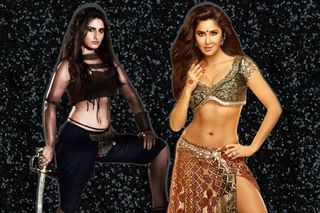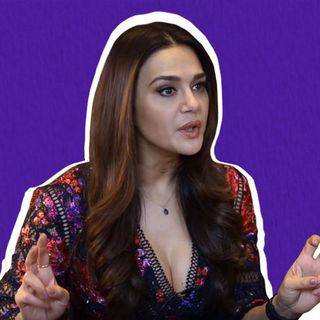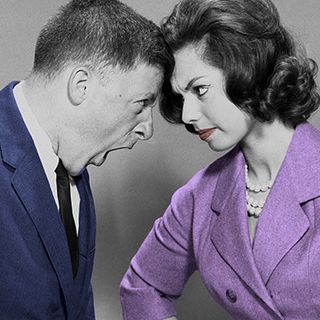
‘Thugs Of Hindostan’ Continues Bollywood’s Trend of Making Men the Stars of Women’s Stories
The plot revolves around Zafira, who doesn’t get a line until 1.5 hours into the movie.

Vijay Krishna Acharya’s Thugs of Hindostan – a Rs. 3 billion period epic – was arguably the year’s biggest film and its biggest disaster. Bankrolled by Yash Raj Films, one of the country’s oldest production houses, with a budget that could potentially fund a dozen Hindi films, ToH was spearheaded by the casting coup of A-listers: Amitabh Bachchan and Aamir Khan. In other words, the very foundation of the film was rooted in capitalizing on the romanticized, exalted status that male superstars – subjects of fervent hero-worship – enjoy in the Hindi film industry.
That probably explains why even though ToH’s central plot revolved around a warrior princess, Zafira, exacting revenge from the British for murdering her family, the film still refused to afford her the luxury of being its lead. Instead, Zafira (Fatima Sheikh) ends up being sidelined in her own story – painted as a pained damsel-in-distress, who exists only to be rescued. The honor of being the film’s lead rested predictably on the shoulders of its two male characters – Khudabaksh (Bachchan) and Firangi (Khan) – who should have ideally been supporting acts.
There’s no better evidence of ToH’s blatant second-hand treatment of its women – especially of Zafira – than in the film’s 10-minute-long opening sequence. Set in 1795 in the fictional fort town of Raunakpur, it opens with a British officer killing the town’s Nawab, his wife, and son in cold blood. The ruler’s young daughter, Zafira, is miraculously rescued at the last minute by Khudabaksh, the family’s loyal guard. But before she can jump to safety, Zafira is wounded by the British officer, leaving behind a bleeding cut on her eyebrow.
It’s only when ToH takes a 11-year-leap, does the reason behind that suspiciously specific injury become clear. Zafira’s scar is mined as a device to assert her inherent weakness and prime her as a Barbie, whose survival demands 24/7 protecting so that she isn’t disfigured further. Khudabaksh is even given a crowd-pleasing emotional moment during which he laments about not being able to shield her from her scar. In doing so, the film declares Zafira’s injury as a liability – undermining her fighting skills and refusing to treat her as a lead. The injury then exists not because it furthers the motivations of the female lead, but solely for the film’s male character to assume center stage.
One of the film’s other subplots involves a proud masculine display of bonding between Khudabaksh and the deceptive Firangi when they take an oath to protect Zafira – a warrior perfectly capable of taking care of herself. The duo take turns wearing a bracelet that is intended to identify the person tasked with rescuing Zafira at a particular time. Throughout the three-hour-long film, Acharya uses this male protective gaze repeatedly, to set the stage for action sequences that rob Sheikh’s character of any agency or individuality. Even though, ToH goes out of its way to reiterate Zafira’s prowess as a warrior, the time spent by the camera on her action stunts are minuscule, less than that gifted to Khan and Bachchan. More importantly, Sheikh barely has dialogues or anything substantial to do other than being saved by the men, or shedding copious amount of tears – she speaks for the first time well into the film’s second half.
Like Zafira, ToH treats its women as an afterthought – an actuality even worse than milking them as props. Designed as an unabashed testosterone party, ToH’s cinematic universe comprises only four women with speaking roles. And none of them get as much screen presence or character development as the two male leads. The Nawab’s wife (whose name we are never told) utters one line before dying in the film’s first few minutes. Veteran actor Ila Arun is wasted in a thankless cameo as a healer, whose existence is mined as the film’s comic relief – unlike the goofy Firangi, the audience is egged on to laugh at rather than with her. And Suraiyya (Katrina Kaif) is dealt the worst hand: Her presence is limited to two item songs designed to satiate the male gaze. Come to think of it, the proceedings in ToH would’ve hardly been affected if these women were to be removed from the script – emblematic of the role inequality that female actresses have to routinely digest in Bollywood.
In fact, the sidelining of female actors in big-budget films is more or less the norm in Bollywood – films with fully realized female characters (Raazi, Pari, Mulk, Sui Dhaaga, and Veere Di Wedding) are the exception. Just this year, we’ve had a splattering of films that have used female actors as fillers (Race 3, Sanju, Gold, Baaghi 2, Bhavesh Joshi) as well as films that have reduced women to supporting acts despite the plot revolving around them (Padmaavat, Pad Man, Stree, Sonu Ke Teetu Ki Sweety). But ToH’s deliberate insistence to not regard a female actor as an equal assumes an even more toxic shade of sexism, given that it was backed by a powerful legacy production house that controls every part of the value chain in the industry.
At a time when conversations regarding wage gap and demands for equal roles for actresses are being mainstreamed, Yash Raj Films – which enjoys unparalleled social clout – is actually in a position to change the narrative. It can very well guarantee that female actors aren’t stripped of roles, screen time, or space on film posters (where they are inevitably relegated to the background). Instead, India’s biggest production house chose to continue perpetuating the myth that a film can birth half-decent female characters only when they’re spearheaded by female directors, producers, or actors. If ToH’s dismal performance at the box-office indicates anything, it’s that male directors, actors, and male-led production houses need to share the burden and view the women in their films as living, breathing people, instead of inanimate objects.
Poulomi Das writes about film, pop culture, and gender. And dreams of french fries, unaffordable vacations, and Netflix. Tweet to her at @PouloCruelo.
Related


Dear Preity Zinta, Here’s What You Should Have Said About #MeToo
